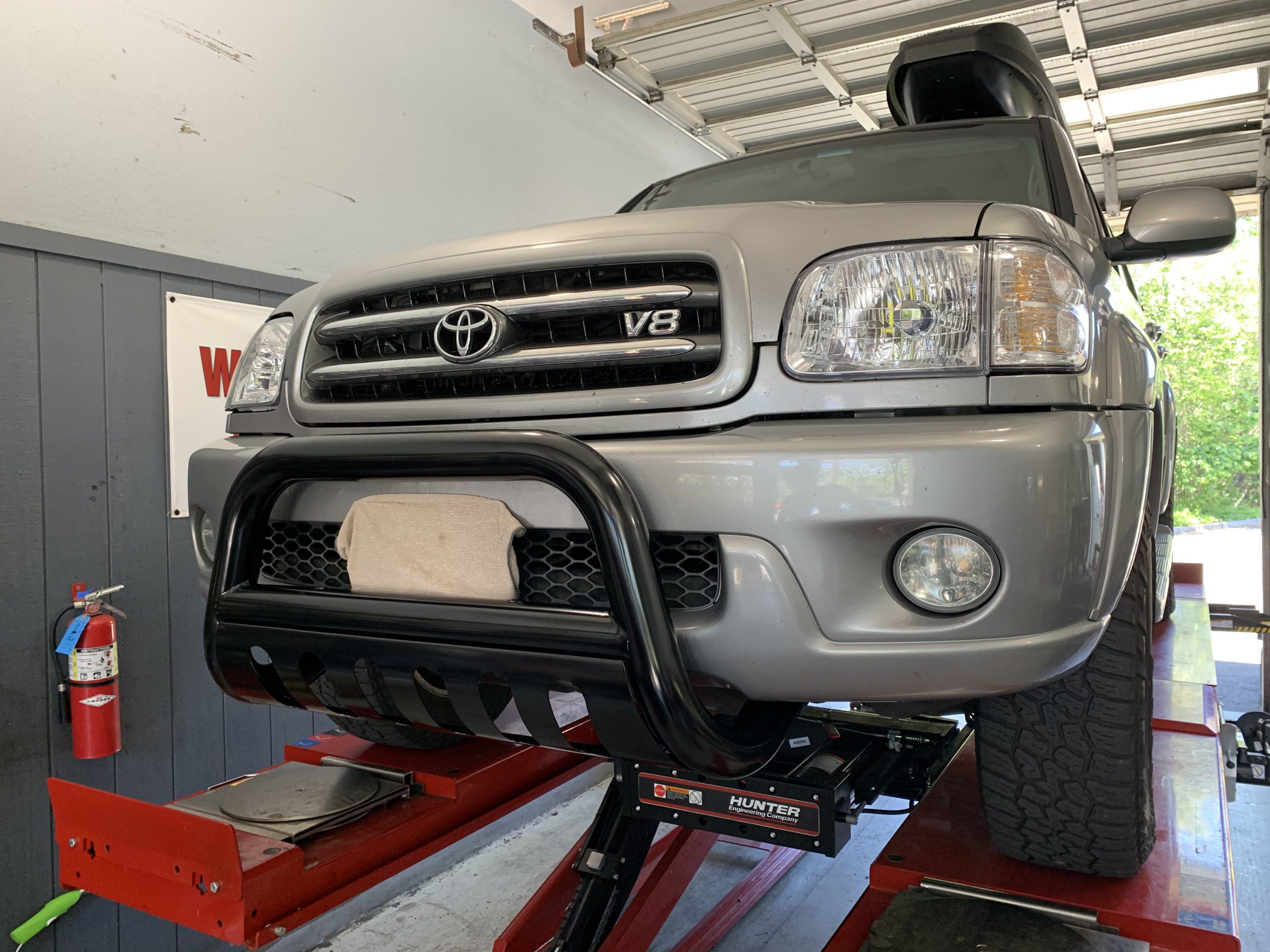By keeping your car’s engine in tip-top shape, repairing any warning lights, and driving your car for a minimum of 15 minutes before a smog test. Ensuring the oil and air filters are clean aids. A lot of drivers miss the obvious stuff, like a gas cap sealed tight or checking for leaks in the exhaust. Basic home checks – simply keeping an eye out for strange sounds or smoke, can indicate early issues. Keeping up with routine service will take you a long way. In the following chapters, determine which actions are most effective, how to identify potential issues ahead of time, and what to anticipate at the testing location. Every detail counts.
Key Takeaways
- Knowing your area’s emissions test schedule and the value of keeping your car’s emissions low can keep you out of trouble with the law and contribute to cleaner air.
- With a little pro-active vehicle care — addressing CEL warnings, making oil changes, maintaining proper tire pressure — you’ll have a great shot at passing the smog test the first time.
- Using diagnostic scan tools to check for fault codes and readiness monitor status allows you to identify and address potential problems well in advance of the testing station.
- Getting your car ready—warming up the engine, recommended fuel additives, and bringing all of your paperwork—makes the test go easier and quicker.
- By eliminating common causes of failure – catalytic converter, oxygen sensors, gas cap seal or EVAP problems – you can avoid expensive retesting and repair bills.
- Read your inspection report carefully – prioritize repairs and work with a professional to fix emissions-related issues before you retest.
Understand Emissions Testing
Emissions testing makes sure your car isn’t spewing too many dangerous fumes. Unlike a simple safety check, emissions tests target the air pollution a vehicle generates. The following table contrasts their emphasis:
|
Type |
Checks for Safety |
Checks for Emissions |
Goal |
|
Traditional Inspection |
Yes |
No |
Roadworthiness, safety |
|
Emissions Test |
No |
Yes |
Pollutant reduction, compliance |
A failed smog test indicates a vehicle pollutes more than permitted. This frequently results in costly repairs, re-testing, and even surcharges. In California, you cannot register your car if it doesn’t pass the test. Emissions tests can help detect system issues, such as a bad catalytic converter, which has been mandatory on cars since 1974 to reduce harmful gasses before they exit the exhaust. If too many vehicles fail, air quality worsens, impacting public health and the environment.
Why Test
California requires emissions testing, particularly for older or high-polluting vehicles. These tests help keep the air cleaner by reducing pollutants like nitrogen oxides, carbon monoxide, and particulate matter. Cleaner air = fewer health problems for all of us. Keeping your car’s emissions system in shape also helps it run better and use less fuel. Passing the test saves money by avoiding fines and costly surprise repairs.
Which Vehicles
|
Vehicle Type |
Subject to Testing |
Special Notes |
|
Petrol/Diesel (new) |
Often |
May have relaxed standards |
|
Petrol/Diesel (old) |
Yes |
Stricter checks |
|
Electric |
Rarely |
Unique checks for battery systems |
|
Hybrid |
Sometimes |
Varies by specific requirements |
|
Classic/Antique |
Often exempt |
Registration purpose-dependent |
Newer vehicles tend to have superior emissions control, so some may be tested less frequently or under more lenient standards. Electric and certain hybrids have unique rules, as they emit either reduced or zero tailpipe emissions. Typically, classic or specialty vehicles may be exempt. Always check the current California regulations.
When Required
Testing frequency varies by your vehicle’s age and type. Some require testing annually or biennially, while others may only be tested upon initial registration or after major repairs. If you sell a car or transfer ownership, that can also trigger a test. Early prep goes a long way—drive your car a few weeks in advance, check fluids, and make sure the “check engine” light is off for the best chance at passing smoothly.
How to Pass Your Smog Test
A smog test includes three parts: visual, functional, and tailpipe emissions. Passing is all about preparation and care, particularly for post-1996 cars. Knowing what examiners check (engine light, modifications, emissions) can save time and money.
Resolve Check Engine Light
Check engine light must be off for the test. A lit light = instant fail regardless of actual emission levels. For pre-96 cars (OBD1) this is the big issue, while newer vehicles (OBD2) need proper diagnostics as a battery disconnect rarely clears deeper system faults. Try a diagnostic scan tool to read and clear codes where possible. If you can’t isolate or repair the issue, get a professional technician to look it over before testing.
Drive Before Testing
Driving for at least 20 minutes, with some time at highway speeds, gets the engine and emissions system up to normal temperature. This enables sensors and the catalytic converter to work correctly. Try to circumvent short trips as the engine requires an entire drive cycle for it to be properly monitored. On this drive, be alert to unusual noises, warning lights or performance problems that may indicate trouble.
Perform Oil Change
Switch the oil if it’s near that date. Grime oil can boost HC emissions in the test. Use oil that fits your car to maximize combustion. Recycle old oil according to local ordinances–never dump it down a drain. Oil changes keep engine parts clean and running smoothly.
Check Tire Pressure
Be sure tires are inflated to the manufacturer’s specs for a solid, precise test. Look at the tread – busted up or worn out tires may impact how the car handles on the dyno rollers used in certain smog tests. Rotating your tires on schedule encourages even wear, helping you avoid any last-minute surprises.
Consider Fuel Additives
Fuel additives clean carbon buildup from the intake/fuel system, which might lower emissions. Opt for those marked safe for your car’s engine and emissions hardware. Never exceed directions for use. With the right additive, it can help improve combustion and reduce levels of harmful gasses before a test.
Common Failure Causes
A lot of vehicles don’t make it through smog because of neglected issues or repeat offenders. Tackling these issues early makes everything more predictable and less expensive. Most tie back to emissions control systems, sensors and poor maintenance. A good maintenance log goes a long way toward identifying trends and preventing recurring problems.
- Faulty or clogged catalytic converter
- Failed oxygen sensors
- Damaged or loose gas cap seals
- Leaky or malfunctioning EVAP system
- Worn spark plugs (especially after 48,000 kilometers)
- Faulty EGR valve causing high nitrogen oxide emissions
- Brake system problems such as caliper sticking
- Anti-lock Braking System (ABS) or related sensor faults
- Vehicles with gross polluter or high emitter profiles
Catalytic Converter
The catalytic converter is crucial when it comes to pollutants. It transforms toxic gasses such as carbon monoxide and nitrogen oxides into less damaging forms. Indicators of failure are usually obvious—loss of power, strange rattling noises, or a decrease in fuel consumption. If the converter is shot or clogged, most smog checks will do this as an automatic fail, even if everything else looks good. Replacement or repair is not a daily solution, an experienced technician must diagnose and service.
Oxygen Sensor
Oxygen sensors monitor the air-fuel ratio in the exhaust. When these sensors fail, your car can run too rich, creating excess emissions and damaging test scores. Most cars activate a warning light when the sensor goes out. Frequent scan tool visits will identify fragile sensors prior to testing. So it’s savvy to replace oxygen sensors every 80,000 kilometers to keep things humming.
Overlooked worn sensors. They can mean the difference between pass and fail. Cars with rich or lean mixes from faulty sensors are more likely to be identified as high emitters.
Gas Cap Seal
A cracked or worn gas cap is simple to overlook. Leaks here can allow fuel vapor to escape, increasing emissions and potentially triggering the CEL. A lot of failed tests come from gas cap problems alone. It’s cheap to replace a bad cap and can prevent a minor issue from becoming a blown test.
Inspect the cap’s seal—make sure it’s not cracked or loose. Do this regularly—seals degrade with age and use.
EVAP System
The EVAP system prevents fuel vapor from escaping into the atmosphere. It employs valves, lines and a carbon canister. Failing tests can be caused by leaky hoses, loose fittings, or a bad purge valve. Typical symptoms are gas odors in or around the car or starting problems following fill ups.
Test the EVAP for leaks in advance. A mechanic can use a smoke test to locate tiny leaks. If unchecked, these issues will arise during the smog test and cause a failure.
Use Diagnostic Scan Tools
Use diagnostic scan tools. They help you check a car’s emission control system before a smog test. These plug into the OBD2 port, typically located below the dashboard by the steering wheel. They pull information from the car’s onboard diagnostics (OBD), displaying if your vehicle passes tests. Scan tools can save you time and money by detecting problems early. Warm up the car first to get the best readings. Some scan tools are basic, while others display additional information or include code-clearing capabilities. Never ignore the tool’s instructions or you’ll make a mistake.
Read Fault Codes
Plug the scan tool into the OBD2 port, turn on the ignition and allow it to read. Fault codes, known as diagnostic trouble codes (DTCs), highlight issues in the vehicle’s systems which MAY result in you failing the test. Codes such as P0171 (system too lean) or P0420 (catalyst system below threshold) tend to pop up. Check the scan tool’s screen for code explanations or consult a manual to look them up.
Clear non-persistent or non-critical codes, but only after repairing the source. Certain codes can be ‘pending’ and not cause a dashboard alert, but will still make a test fail. Use it to erase fixed codes and scan again to see if they come back. If a serious fault pops up — like a misfire or oxygen sensor failure — get it repaired before you go for testing.
Check Readiness Monitors
Readiness monitors indicate whether critical emission systems have been verified and are functioning. They range from monitors for the catalyst, oxygen sensors and evaporative emissions. All monitors must be on ‘ready’ to pass at most locations. If a monitor isn’t ready, the test center might not run the test, or the car might fail.
Check scan tool for monitor status. If you recently disconnected the battery or cleared codes, some monitors will revert to “not ready.” In this instance, operate the vehicle via a complete drive cycle — that is, drive varying speeds and load conditions over a specified distance, typically between 80–160 km. Scan again to make sure the monitors have reset. A few tools assist by displaying which screens remain to be configured. Always check this before going to the test center.

The Day of Your Test
A smooth smog test starts with good planning and the right frame of mind. Most cars require an emissions test every other year and around 10% fail the initial test, most likely from neglecting to perform necessary maintenance or having warning lights activated. A bit of fussiness on test day can improve the chances of success.
Find a Station
- See if the station is certified and licensed by local authorities.
- Review customer ratings and online comments for reliability
- Confirm the station complies with all local and state environmental regulations.
- Ask about the average wait time and appointment policies
- Seek out stations with a fresh, secure and cozy waiting area.
Make sure the facility employs current technology and adheres to regulatory standards. If you reserve early, you’ll dodge long lines and harried testing. Calling first lets you get a feeling for their procedures and if the staff is accommodating or not.
Warm Up Engine
Even just driving 20–30 minutes before your test gets the engine and emissions system up to optimal temperature. This is imperative – even if the car hasn’t been driven much recently. These short drives in the days before the test can keep the system in good shape.
The engine shouldn’t be cold when you get there. The emissions systems have to be at operating heat to function as intended. Cold engines tend to run rich and spew out more pollution. Try to plan your test for a cold day, if possible, this helps the engine run better.
Check out the dashboard! If the check engine light is on, it’s going to fail, almost always. Discover what’s causing it prior to going in.
Bring Documents
Prepare your registration and a valid ID. Most stations will want proof of insurance, so keep it up-to-date and accessible.
Keep any past smog inspection reports close at hand – some stations will request them, and they can help diagnose any recurring issues. Pack a credit card or some cash to pay the inspection fee since some stations may not take all forms of payment.
Interpreting Your Results
A smog test report provides you information about how your car is performing with respect to emissions requirements. Understanding how to interpret these results keeps you compliant and helps keep your car running smoothly. Use these steps to make sense of your report and plan your next move:
- Contrast your result to your vehicle’s emissions standards for your vehicle type and year.
- Save a copy of your inspection report for your files or legal purposes.
- Mark any “Fail” items and look for shared culprits, such as a bad oxygen sensor or improper fuel/air mixture.
- Interpret your results and use the findings to plan repairs or tune-ups before retesting.
- Think about the test conditions–wet tires or a rainy day.
- Just ensure that all the low-level upkeep — like verifying coolant and fuel levels — was handled well ahead of the test.
If You Pass
If your car passes the smog test, you’re in luck – your ride complies with local emissions standards, so you’ll be able to renew your registration without impediment. Save your inspection report. It’s your insurance if there’s an issue down the road, or if you decide to sell your car. A few locations ask to see this paperwork when you’re signing up.
Stay on top of routine vehicle maintenance. Remember to schedule service checks and address tiny repairs before they become larger. For instance, swap out a feeble oxygen sensor immediately — bad sensors are a top reason for check engine lights and flunked smog checks. Good habits now make future tests simple.
Tell a friend or coworker about it. Straightforward tips– like driving at night before the test, or staying away from rainy days– can spare others from these types of traps.
If You Fail
Begin with a close reading of your inspection report. It should include the particular reasons your car failed. Concentrate on the ‘Fail’ items. Typical culprits include an oxygen sensor or tires slipping on the dyno. Wet tires, particularly on rainy days, can skew readings and cause a false failure.
Fix according to what your report tells you. Solve the most important emissions problems first. A ‘lazy’ oxygen sensor, for example, can foul your car’s emissions profile. Find yourself a good emission mechanic. Request a diagnostic check, make sure everything necessary has been serviced. Plan to retest, but only after you’ve repaired everything. Double-check coolant and fuel levels immediately prior to the test to prevent avoidable setbacks.
Conclusion
Tip #1: Pass a smog test the first try by keeping your car in shape. Check for trouble codes with a scan tool. Repair leaks or worn parts quickly. Warm up your engine before you go. Top off with quality gas. Keep your oil and filters clean. Looking for warning lights on your dash? Go to a reputable shop. If you feel uncertain, ask questions. A well-maintained vehicle purrs and clears. Keep ahead with easy checks. For more tips or to share your own story, join the conversation on the blog. Your response educates others. Stay savvy, keep your wheels primed, and help keep the air clean.
Need a Smog Check in California? Trust autoTECH Blackhawk for Expert Service
Experience the excellence of autoTECH Blackhawk when it comes to handling your California Smog Check. Why trust us with your inspection needs? Our standout feature is an unwavering dedication to building strong relationships with our clients, an essential part of keeping your vehicle compliant and running clean. This commitment shapes our tailored approach, ensuring every inspection aligns with your specific goals for performance, efficiency, and peace of mind on the road.
Whether your registration renewal requires a smog check, you’re concerned about emissions test results, or you simply want expert guidance on staying compliant with California standards, autoTECH Blackhawk is here to exceed your expectations. We proudly back our work with an industry-leading 3-year / 36,000-mile warranty on related repairs and use only high-quality, manufacturer-recommended parts when service is needed.
Don’t wait until a failed test disrupts your plans—contact our friendly team today to schedule a convenient, contactless smog check appointment!


